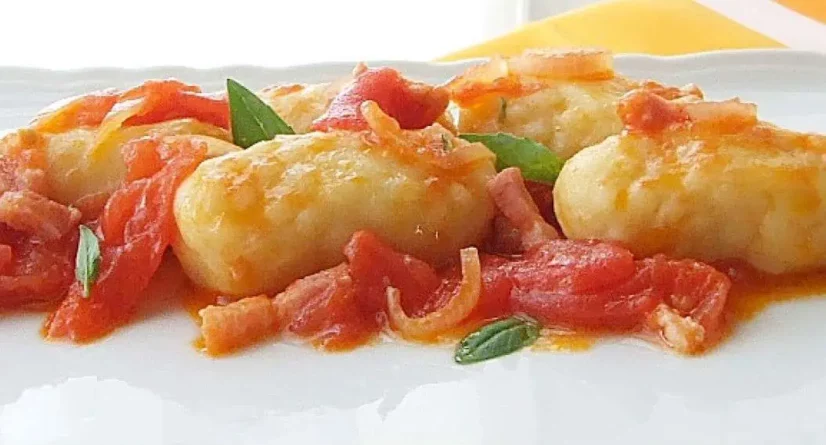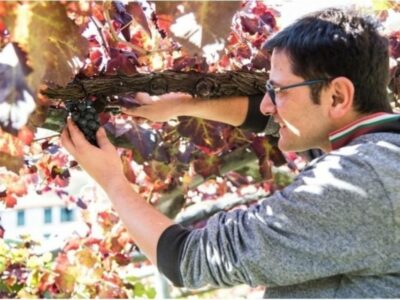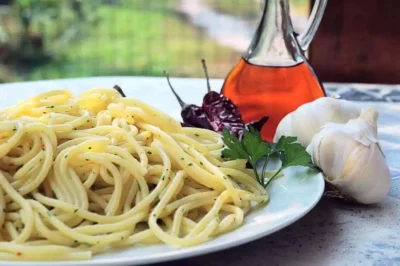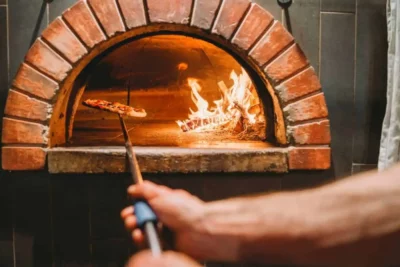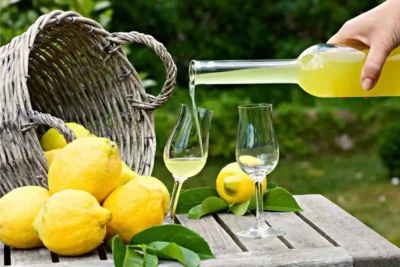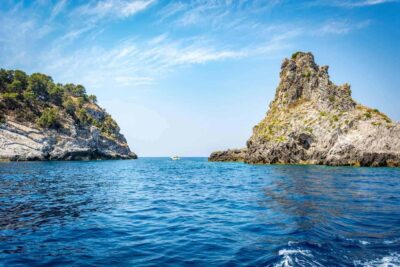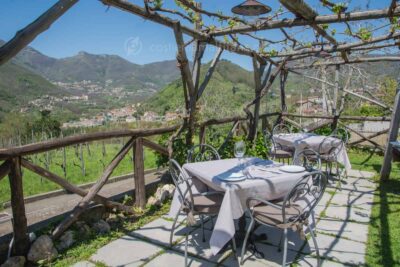This excursus, dedicated to the ‘ndunderi minoresi, a typical homemade pasta, begins when a friend visiting from another region asking you to be his guide.
” Drive me around the Amalfi Coast: let me discover the most beautiful places”.
Your goal as a local is to build the perfect itinerary, reconciling his desire to admire the most famous places in person, which he may have seen in passing on social media, with your desire to show him the authentic Amalfi Coast, the one you carry in your heart even when you are out.
As an insider who has often accompanied friends to discover the Costiera, I have realised one thing: a self-respecting tour must necessarily include some stopovers of real taste. Otherwise a little piece of that authenticity that you so much want to convey and which passes through the flavours and traditional rituals of the kitchen table and conviviality is missing.
In short, you cannot say you really know a place if you have not enjoyed its traditional dishes.
Because food resists the passage of time: it is a little piece of the present that perfectly preserves the history of a place and, if you are lucky enough to sit down at the table with someone local, it is an excellent pretext for discovering new things, finding new connections, activating new inspirations.
The case in point is emblematic, because on my last tour I had the good fortune to take my travelling friend to discover the typical ‘ndunderi minoresi, about which I will try to tell you something, just as if we were at a table, in front of a fragrant steamy dish accompanied by a delicious glass of wine.
But let’s start with the dish.
Table of Contents
The ndunderi minoresi: the ‘gnocco’ that is not really a gnocco

Imagine the scene: we are sitting at a table on a nice breezy terrace of a secluded little restaurant. I have ordered for both of us two beautiful plates of ‘ndunderi al pomodoro”, which are materialising in front of you.
As soon as the waiter serves you the plate, you look at it. The smell is delicious: the fragrance of that basil is irresistible. You look at me and say: ‘These are the ‘ndunderi! They look like gnocchi’.
And there I start playing the part of the local expert and explain to you that, no, those are not gnocchi.
Minori ‘ndunderi is a type of fresh pasta with a special shape. They are on average larger than gnocchi, and they don’t all have to be perfectly the same. In fact, if you ask me, I am convinced that the irregularity of the individual pieces contributes to their taste: it is a dish that does not care about appearances, but focuses on essence and goodness.
Now, if I know myself well, I will firmly and sweetly invite you to taste it: you will then also discover the texture of the ndunderi, which are dense, can be felt under the teeth, a little less tender than the gnocchi you have associated them with.
The credit for this particular consistency is surely the hand processing: once the dough has been made, it is divided into strings that are then cut into oval chunks and passed on a grater.
The ‘ndunderi minoresi: a tradition from the ancient Romans

A Roman tradition that still lives on in Minori today. When I said that ‘ndunderi are not really gnocchi, I was also alluding to the ingredients. This type of fresh pasta, in fact, is prepared with a dough made from flour, potatoes and cow’s ricotta cheese.
Some also use sheep’s ricotta, which is probably reminiscent of the ancient Roman balls, from which gnocchi are said to descend. Roman balls were made with ‘caseata flour’ (farina caseata), which was made from spelt flour and rennet.
As the ancient Roman Villa of Minori, dating back to the 1st century A.D., testifies, the Amalfi Coast has always been a holiday destination, since ancient times.
As the ancient Roman Villa of Minori, dating back to the 1st century A.D., testifies, the Amalfi Coast has always been a popular holiday destination, since ancient times.
Basically, the dish you have in front of you is telling you, bite after bite, a little piece of our village’s history.
It is no coincidence that this dish is prepared on the occasion of the celebration dedicated to Santa Trofimena, the patron saint of Minori, which is celebrated three times a year: 5 and 27 November and 13 July.
For the occasion, the people of Minori only use to prepare this traditional dish, which is seasoned with a rich tomato and sausage sauce. In restaurants, however, ‘ndunderi can also be found with different toppings, such as the famous colatura di alici from Cetara.
The tradition of handmade pasta on the Amalfi Coast
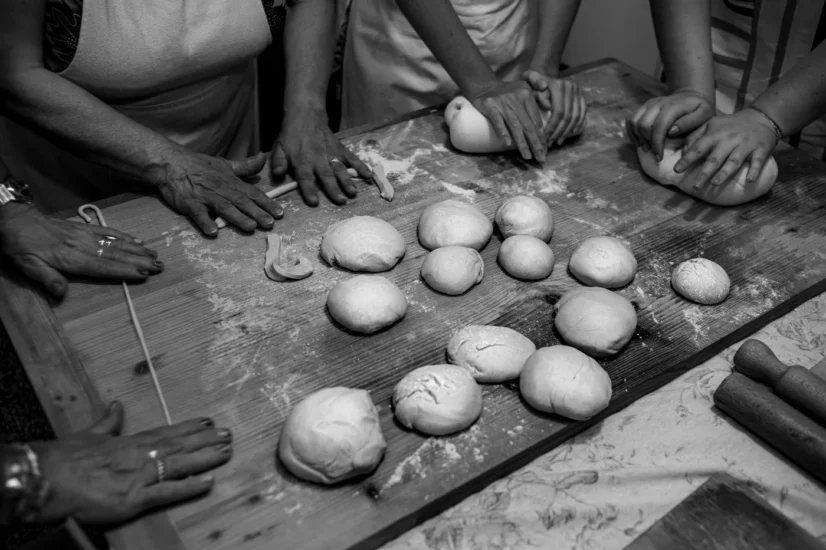
At this point, as the plate empties, we come to talk about this tradition so strong on the Amalfi Coast.
There is no more fascinating sight than an inquisitive traveller and a local with the desire and passion to get to the bottom of it and tell the story.
As an insider, I like to think that the beauty of the journey, more than in the photos, is in the astonished eyes of those who are admiring or learning something new.
So, let us proceed directly to tell the origin of this tradition, which stands out in Minori, the City of Taste, but which can be found in all the towns along the Amalfi Coast.
Let us start from our geographical position: the road, as you may have noticed, is difficult to travel even today. It opens before your eyes those views that take your breath away to make up for the previous bend that made you break out in a cold sweat.
Over the centuries, this isolation and the conformation of the land have worked in favour of the inhabitants of the Amalfi Coast.
Already in the Middle Ages, the towns established a solid relationship with Naples as far as wheat, its transformation into flour and its commercialisation were concerned, as Naples lacked mills, which were instead present in large numbers along the swirling torrents of the Coast.
The asperity of the area, on the other hand, made it difficult for the authorities to control the production of Amalfi’s mills, which were able to procure and trade autonomously thanks to their efficient navy, avoiding taxes and a series of viceregal laws.
From millers to pasta makers: the history of pasta on the Amalfi Coast
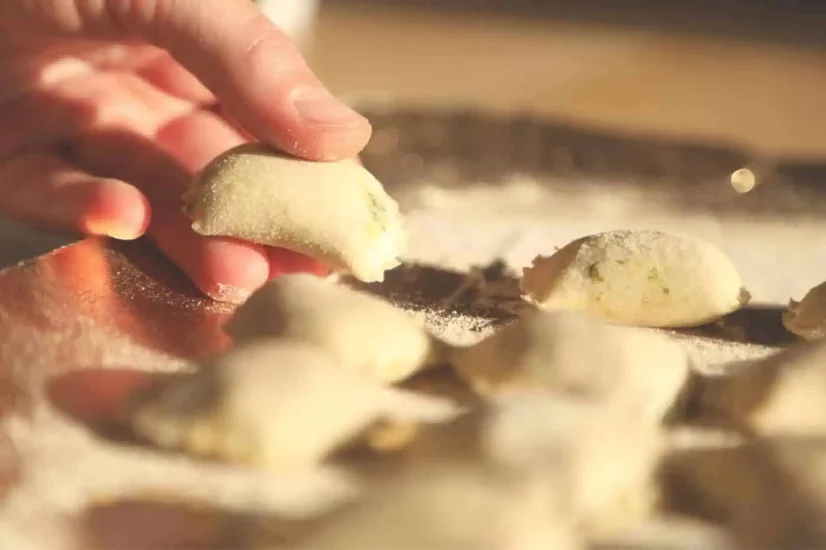
Always tenacious and independent, the inhabitants of the Coast went from being simple millers to pasta makers and their knowledge of raw materials allowed them to excel in the production of top quality hard semolina pasta, also helped by the climate that allowed it to be perfectly ‘dried’.
Beginning in the 16th century between the Amalfi Coast and Torre Annunziata, passing through the Gragnano valley, numerous proto-industrial workshops were established, using the mechanical gramola and the die with a press, the ‘ncegno’, which helped change the diet of people in Campania from being leaf-eaters to ‘pasta-eaters’.
Without delving into defining the differences between pasta and macaroni and the various processing techniques, we note that the delicacies of the local pasta makers, together with paper, would increasingly become the main and best product of Amalfi, reaching international tables by the late 18th century. Vincenzo Corrado, a gastronome, in his ‘Notiziario delle produzioni particolari del Regno di Napoli’ (1792), speaking of the Amalfi Coast, tells us that ‘there is a great industry of macaroni and other fine pastas, sought after by all nations and traded abroad’.
In the well known ‘Istoria della città e costiera di Amalfi’ (1836), Matteo Camera tells us that ‘… macaroni, as well as minutely processed pastas, which for their perfect quality are the best in the kingdom: they are sent to Naples, Sicily, Calabria, Livorno, Genoa, Marseilles and sometimes as far as Rio de Janeiro’.
I know you’re about to ask, ‘Yes, but why did you make me eat the ‘ndunderi minoresi?’
I’ll explain it to you straight away.
Among the many communities along the coast, the best qualitative and quantitative results in the production of pasta between the 19th and early 20th centuries were achieved in the town of Minori where, as Matteo Camera recounts, ‘the ingenious, hand-made pastas have a supremacy over all the others on the Coast’.
And of that Minori pasta production remains today a widespread domestic tradition that finds its highest expression in the typical dish you have just tasted, the ‘Ndunderi’.
How the story of pasta on the Amalfi Coast ends
Towards the end of the nineteenth century and definitively during the twentieth century, the isolation and territory of the Amalfi Coast became a disadvantage in the competitiveness of the Amalfi pasta makers who gradually transferred their knowledge and industriousness to the Neapolitan side, especially to the area between Gragnano and Stabia.
A hundred years of activity came to an end.
But like so many stories, this one too ends, leaving indelible traces that still allow us the pleasure of telling something beautiful about our places.
There are stories that leave a bitter taste in the mouth. This one hopefully left you with the taste of a small good thing.

